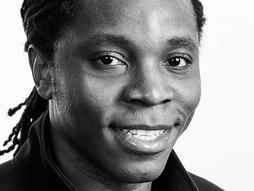Even the most advanced prosthetic isn't useful if it's hard to wear. This observation guides TED Fellow David Sengeh's work at the Biomechatronics group in the MIT Media Lab.
Why you should listen
David Sengeh was born and raised in Sierra Leone, where more than 8,000 men, women and children had limbs amputated during a brutal civil war. He noticed that many people there opted not to wear a prosthesis because proper fit is such an issue.
Sengeh has pioneered a new system for creating prosthetic sockets, which fit a prothesis onto a patient's residual limb. Using MRI to map the shape, computer-assisted design to predict internal strains and 3D printing to allow for different materials to be used in different places, Sengeh is creating sockets that are far more comfortable than traditional models. These sockets can be produced cheaply and quickly, making them far more likely to help amputees across the globe.
Sengeh was named one of Forbes' 30 under 30 in Technology in 2014, and in April 2014, Sengeh won the $15,000 "Cure it!" Lemelson-MIT National Collegiate Student Prize.
What others say
“The lasting legacy of Sierra Leone's war has followed Sengeh all the way to the United States, shaping his innovative work to this day.” — CNN.com

